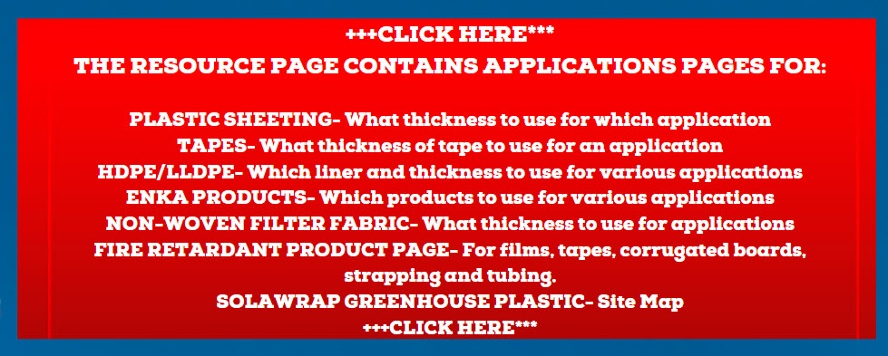Is plastic the enemy when it comes to the environment? What about plastic sheeting AKA polyethylene sheeting also wreak havoc?
Plastic sheeting comes riding in on a big white horse when it comes to protecting the environment. Yes it's true. Let's look at HDPE (high density polyethylene) and LDPE (low density polyethylene). Here is an extenisve list of the acids and compounds that don't effect HDPE and LDPE at 20 degrees C - 50 degrees C: For example, Hydrochloric acid 20%, Hydrochloric acid 35%, Hydrochloric acid 5%. To see a full listing click here.
Plastic sheeting under concrete slab
Under-slab vapor retarders which are made of plastic play a very important role in retarding moisture from coming up through the concrete and into the structure. Nobody wants their newly installed wood floors or carpeting to become moist and moldy due to moisture coming up through the ground. Today most experts feel very strongly that engineered films designed specifically for use as vapor retarders should be used as vapor retarders. These products are made from 100% virgin resins, and have excellent quality control. Most are tested to a standard called the ASTM E1745, which is the standard for vapor retarders in contact with soil or granular fill used under concrete slabs. These materials are engineered not to decay in this type of application, whereas most construction grade poly will begin breaking down almost immediately and will have lost most of its structural integrity within 2 years. How many times have you dug up plastic sheeting in your life that is just destroyed from being buried in the ground? I know this is a bit off subject here, but the principles are even more important when dealing with vapor retarders for hardwood flooring, which is considered a critical application for vapor retarders.
Plastic Sheeting Vapor Retarders for under the home or in the crawl space
It makes some difference what part of the country you are in, what kinds of humidity levels are common in your region, whether or not your home has a good quality vapor retarder under the slab, basement, or in the crawl space. If you already have an excellent vapor retarder, then the one you use under your hardwood floor is far less critical. If you are putting a hardwood floor over a damp crawlspace, and use a poor quality vapor retarder, you are asking for a lot of problems with the hardwood flooring, and will likely suffer problems with buckling, warping, noisy flooring, lots of expansion and contraction, and often finish problems, just to name a few.
Plastic Sheeting- Can It Save Lives?
Should you be in an area where Radon is prevalent, or methane, then the use of a barrier with capabilities to retard these gasses becomes important also. Again these films are engineered to have a very tight cell structure capable of keeping these very small molecules from passing right through the membrane. These gasses, and to a very large extent water vapor pass quite easily through the cellular structure of common construction grade polyethylene (aka Visqueen).
This is kind of a long answer to your question, but the plastics in the flooring aisle are hopefully engineered to be better vapor retarders than the ones in the construction aisle. If one wants an even better vapor retarder, then one might want to contact a plastics company specializing in vapor retarders so you can find out which is most appropriate for your application. The engineered plastic sheeting vapor retarder is fairly inexpensive insurance for having a great experience with a hardwood floor as compared with what can be a nightmare experience when the wrong product is used.
Plastic Sheeting in Construction
Plastic in the form of flexible plastic sheeting is man's best friend (well almost) when it comes to the construction industry.Flexible plastic sheeting is used in a million different ways to protect surfaces. It's used to protect carpeting, flooring, cabinets, wood, building exteriors, windows, fixtures...and the list goes on and on. Additionally, additives can be added to the poly to make it fire retardant, anti-static, withstand the sun's UV rays, etc.Best of all, polyethylene can be recycled.
So while we agree it is so tragic to see bottles and plastic bags flowing in our oceans, we are compelled to give a positive plug to plastic in sheeting form when it is making our environment cleaner and safer.




